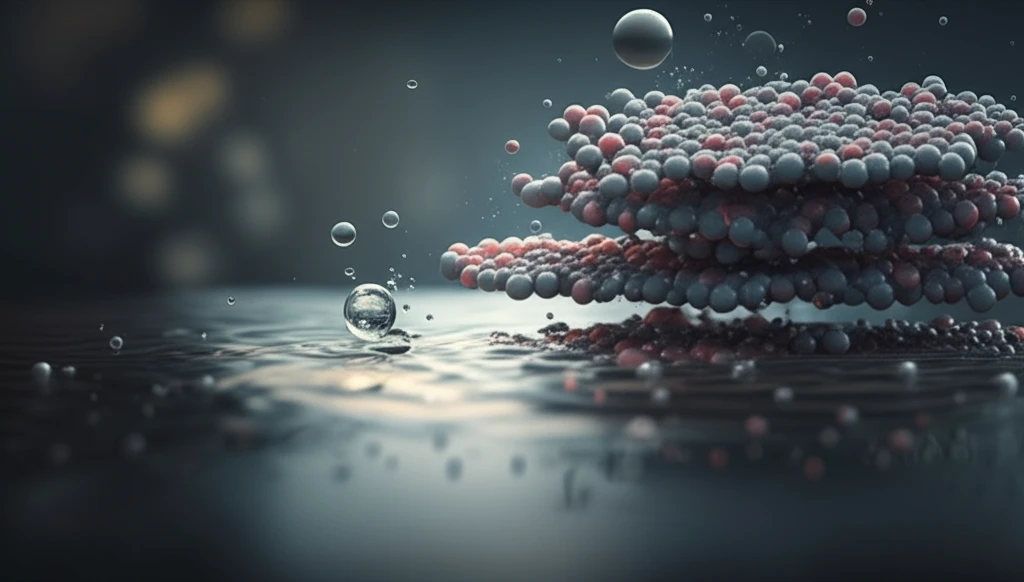
The Magic of Molybdenum Disulfide: How this Material Could Revolutionize Water Purification
"Discover the cutting-edge research behind liquid-exfoliated MoS2 and its groundbreaking applications in on-demand oil-water separation, offering a sustainable solution to global water contamination challenges."
Water contamination, especially from oil spills and industrial discharge, poses a significant global challenge. Traditional methods of oil-water separation often fall short in efficiency and sustainability. But what if there was a material capable of dramatically improving this process, offering a more effective and environmentally friendly solution?
Enter molybdenum disulfide (MoS2), a compound that's capturing the attention of scientists and engineers worldwide. Recent research highlights the remarkable potential of liquid-exfoliated MoS2 in on-demand oil-water separation, showcasing its unique properties and ability to revolutionize water purification techniques.
This article delves into the science behind this groundbreaking material, exploring how it works, its potential applications, and the impact it could have on our environment. Whether you're a science enthusiast, an environmental advocate, or simply curious about the future of water purification, prepare to discover the fascinating world of MoS2.
What Makes Liquid-Exfoliated MoS2 a Game-Changer in Water Purification?

Molybdenum disulfide (MoS2) isn't new—it’s long been used as a lubricant. However, when processed using liquid exfoliation, it gains some exciting properties. Liquid exfoliation involves separating MoS2 into atomically thin layers, which significantly increases its surface area and enhances its interaction with other substances. This process unlocks MoS2's potential for advanced applications, particularly in environmental science.
- Selective Separation: MoS2 can selectively repel oil while allowing water to pass through, and vice versa, depending on the surface conditions.
- High Efficiency: Its high surface area and unique wettability contribute to efficient separation processes.
- Versatility: MoS2 can be applied to various materials, such as fabrics, to create separation membranes.
- Sustainability: Using MoS2 offers a more environmentally friendly alternative to traditional separation methods.
The Future is Clear: MoS2 and Sustainable Water
The exploration of liquid-exfoliated MoS2 for oil-water separation marks a significant step forward in addressing global water contamination issues. Its unique properties, ease of application, and potential for sustainable use make it a promising material for future water purification technologies. As research continues, we can expect to see even more innovative applications of MoS2, paving the way for cleaner, more sustainable water resources for generations to come.
